Table of Contents
Introduction: The New Era of Remote Learning
The past few years have dramatically reshaped the education sector. From schools to universities to corporate training programs, classrooms shifted online almost overnight during the COVID-19 pandemic. While this transformation kept learning alive, it also exposed deep challenges: high dropout rates, disengaged students, and a one-size-fits-all approach that left many learners behind.
This is where benefit of ai in education is stepping in as a game-changer. Unlike traditional digital learning platforms that simply deliver pre-recorded lessons, AI-powered education platforms personalize the journey for each learner. They adapt lessons to student performance, provide instant feedback, and even automate tasks for teachers , creating a more dynamic and effective learning experience.
Today, AI is not just an optional add-on in education. It’s becoming a critical tool for personalized learning, adaptive assessments, and intelligent tutoring. From language apps like Duolingo to enterprise platforms like LearnWorlds and Thinkific, AI is reshaping how knowledge is delivered, consumed, and measured.
In this article, we’ll explore how AI is transforming online education, its benefits, real-world tools, global adoption trends, challenges, and what the future of learning may look like.
What are AI-powered education platforms?
At its core, AI in online education means embedding technologies like machine learning, natural language processing, and predictive analytics into learning platforms. These tools help move beyond passive content delivery to interactive, personalized learning experiences.
How They Differ from Traditional LMS (Learning Management Systems)
- LMS: Focuses on content delivery, assignment submission, and grading.
- AI Platforms: Focus on personalization, adaptive feedback, student behavior analysis, and automation.
Core Technologies Driving AI in Education
- Machine Learning (ML): Analyzes student progress and predicts performance trends.
- Natural Language Processing (NLP): Powers chatbots, essay feedback, and conversational AI tutors.
- Predictive Analytics: Identifies at-risk students and suggests interventions.
- Adaptive Engines: Adjust the pace and difficulty of lessons based on real-time learner data.
Example: Khan Academy’s Khanmigo is an AI tutor that helps students solve math problems step by step while also assisting teachers with lesson planning.
Core features and benefits (how it works)
1. Personalized & Adaptive Learning
AI customizes learning paths based on individual performance. A slow learner might get more practice quizzes, while an advanced student moves quickly to higher-level challenges.
| Feature | Benefit | Example |
|---|---|---|
| Personalized Learning | Adapts lessons to student pace and knowledge gaps | Century Tech’s adaptive platform |
| AI Tutors & Chatbots | Provide instant support and feedback 24/7 | Khanmigo, Duolingo roleplay |
| Automated Grading | Reduces teacher workload by 40%+ | Gradescope by Turnitin |
| Adaptive Assessments | Adjusts test difficulty in real time | Knewton Alta |
| Data Analytics | Identifies struggling students early | SchoolAI dashboards |
Chart comparing student performance improvement with AI vs. traditional methods.
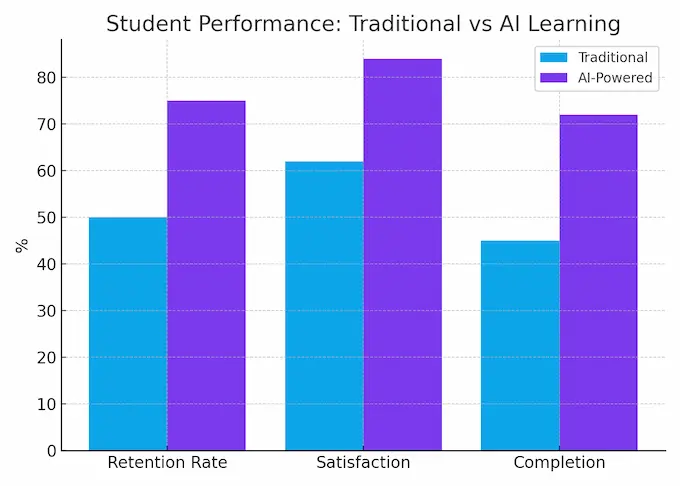
| Approach | Retention Rate | Student Satisfaction | Completion Rate |
|---|---|---|---|
| Traditional Learning | 50% | 62% | 45% |
| AI-Powered Learning | 75% | 84% | 72% |
1) Personalized & adaptive learning
AI tracks pace, accuracy, and patterns to adjust lessons, examples, and practice. Learners get the right challenge at the right time, which boosts confidence and completion.AI breaks away from the “one-size-fits-all” model. Platforms like Squirrel AI or Knewton Alta dynamically adjust difficulty, pacing, and resources based on student behavior and progress.
adaptive learning can improve student outcomes by up to 30% compared to traditional methods.
2) Intelligent tutoring & 24/7 support
Chatbots and virtual tutors answer questions, explain steps, and give hints, any time. Students feel supported even outside class hours.
3) Automated admin & grading
AI handles grading for objective items, drafts feedback on writing, builds question banks, and compiles progress reports. Teachers win back hours for coaching and connection.
4) Predictive analytics for early help
Dashboards flag students likely to struggle or disengage, so educators can intervene early with targeted support.
5) Accessibility & engagement
Auto-captions, translation, text-to-speech.AI assists learners with disabilities via text-to-speech, translation, and captioning. Gamification elements like badges and leaderboards also make learning more interactive and motivating
Tools shaping everyday teaching & learning
AI isn’t just theory — it’s already reshaping classrooms
Benefit for Students → They save time, gain life skills, and learn at their own pace both teacher and student are getting benefit of ai in education.
Benefit for Teachers → Less admin work, more time for mentoring.
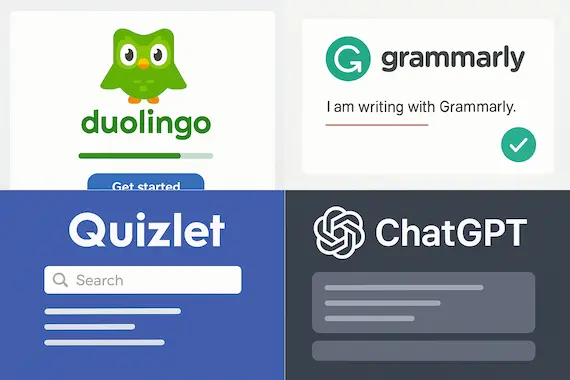
- Grammarly for Education – AI checks grammar, clarity, tone, and originality. Students learn to write clearly; teachers spend less time correcting mechanics.
- Quizlet – AI turns notes into flashcards and practice tests (“Magic Notes”), and adapts review to focus on weak areas.
- AI Writer – Generates structured outlines, summaries, and draft material. With teacher oversight, it speeds prep and lets students focus on analysis and reflection.
- BrightClass – Combines AI insights with classroom management. Real-time dashboards show who’s stuck, so teachers can adjust instruction on the spot.
- ChatGPT (and similar assistants) – A flexible tutor, brainstorming partner, explainer, and practice buddy across subjects and levels.
- Duolingo: Uses GPT-4 for roleplay and adaptive language practice. Result: 78% of users felt more confident in real conversations within 4 weeks.
- Khan Academy’s Khanmigo/: Acts as both a student tutor and a teacher assistant.
- MagicSchool AI: Offers 60+ AI tools for teachers (lesson planning, IEP creation, newsletters).
- SchoolAI: Provides dashboards to track struggling students in real time.
- Carnegie Learning’s MATHia: Blends AI analytics with human teaching for math education
| Platform | Key Features | Target Audience |
|---|---|---|
| Duolingo | Adaptive language lessons, conversational practice, AI-driven content creation (GPT-4 roleplay, A/B testing) | Language learners |
| Khanmigo (Khan Academy) | AI tutoring, teaching assistant, personalized learning | K-12 students Educators |
| SchoolAI | Personalized learning, administrative automation, real-time dashboards | K-12 students Educators |
| MagicSchool AI | Lesson planning, assessment creation, 60+ teacher-focused AI tools | K-12 educators |
| Querium | STEM tutoring, step-by-step guidance, homework assistance | High school College |
| Knewton Alta (Wiley) | Adaptive learning, predictive analytics, STEM difficulty adjustment | Higher education |
| Century Tech | Adaptive learning with cognitive neuroscience, real-time gap analysis | K-12 Higher ed |
| Grammarly for Education | AI writing assistant, grammar checks, plagiarism detection | Students Educators |
| LearnWorlds | AI course planner, AI assessment designer, content editor, feedback generator | Educators Trainers Businesses |
| Thinkific | AI-powered course builder, student insights, marketing tools | Entrepreneurs Coaches Educators |
| Kajabi | AI assistant for content creation, marketing automation, course builder | Coaches Solopreneurs Small businesses |
| Absorb LMS | AI analytics, intelligent search, adaptive learning, automation | Enterprises Corporate training |
| SC Training (EdApp) | AI-based microlearning, gamification, mobile-first training | Enterprises Employee training |
| CYPHER Learning | AI content generation, adaptive learning, automation | Schools Universities Enterprises |
| WorkRamp | AI training creation, compliance tracking, employee onboarding | Enterprises SaaS companies |
| Zavvy | AI training automation, employee development, skill mapping | HR teams Employee training |
| LearnUpon | AI reporting, automation, HR & business tool integrations | Enterprises Corporate training Associations |
How teachers are getting benefit of ai in education and handleing individual differences.
Every class has varied levels and learning speeds. Traditionally, that means uneven attention. AI evens the field:
- Diagnose quickly: Platforms spot strengths and gaps for each student.
- Automate differentiation: The system assigns tailored practice and enrichment without extra manual work.
- Guide whole-class progress: Teachers see a unified dashboard and can run focused mini-lessons for groups with the same needs.
Result: students move forward more uniformly, while teachers spend their time where humans matter most mentoring, feedback, and motivation.
How AI boosts teacher productivity (and reduces burnout)
- Plan faster: Generate lesson outlines, exemplars, rubrics, and quizzes in minutes.
- Assess smarter: Auto-grade objective items; draft readable feedback for writing.
- Communicate clearly: Auto-summaries and parent updates reduce admin friction.
Freed from repetitive tasks, teachers can observe, coach, and create—the human side of great teaching.
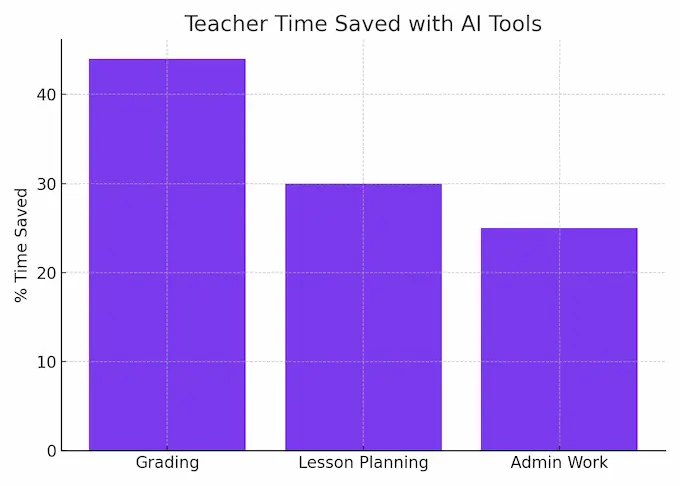
How students gain life skills in the time AI saves
- Communication & writing: polishing clarity, tone, and argument structure.
- Critical thinking & problem-solving: tackling real-world cases and projects.
- Collaboration: peer review, team projects, and presentations.
- Digital fluency: prompt design, data reading, tool selection, and AI ethics.
These are the durable skills that matter in higher education and work.
Market outlook (why this matters for schools and parents)
Adoption is rising fast across K-12, higher ed, and corporate training. Growth is driven by proven gains in completion, early intervention for at-risk learners, and time savings for teachers. Regions with strong device access and connectivity lead, but affordable, mobile-first tools are closing gaps globally.

Challenges & responsible use
Despite the promise, benefit of ai in education faces challenges:
- Data Privacy: AI systems collect large amounts of student data. Safeguarding it is critical.
- Algorithmic Bias: AI may unintentionally favor certain groups or learning styles.
- Cost Barriers: High setup costs limit access for underfunded schools.
- Digital Divide: Not all students have equal access to devices or internet.
- Teacher Resistance: Some educators worry about AI replacing human roles.
- Privacy & data protection: choose vendors with clear policies and strong security; follow local laws.
- Bias & fairness: keep humans in the loop; audit outputs and grading.
- Access & equity: provide offline options, device loans, and digital-skills onboarding.
- Academic integrity: teach citation, paraphrasing, and ethical AI use; design assessments that value process and reasoning.
- Algorithmic Bias
Biased training data can lead to unfair grading or recommendations. For example, Automated Essay Scoring systems have shown biases based on race or socioeconomic status.
Data Privacy and Security
AI platforms collect vast amounts of sensitive student data. Institutions must comply with GDPR, FERPA, and COPPA while ensuring transparent, explainable AI.
The Digital Divide
Not all students have equal access to AI-powered tools. Bridging this gap requires investment in infrastructure, affordable devices, and digital literacy training.
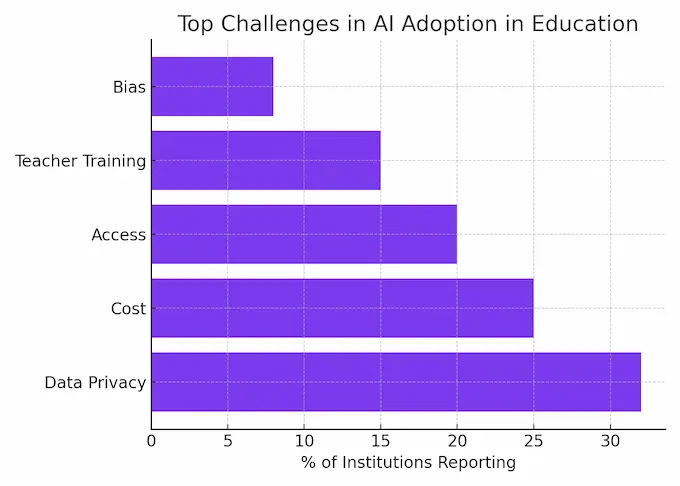
The road ahead
Expect hyper-personalized learning that considers pace, prior knowledge, and even cognitive load. AI will blend with AR/VR for simulations and labs, while teachers become coaches and designers of learning, not just content deliverers.
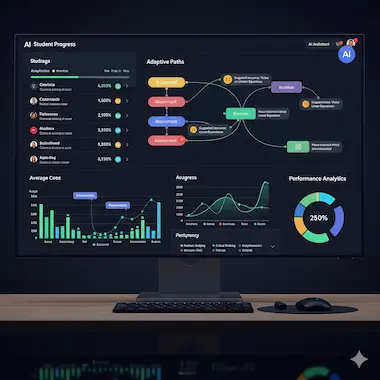
Conclusion: A Smarter Way to Learn
benefit of ai in education is no longer optional , it’s the future of learning. From adaptive learning systems to AI tutors and automation tools, it enhances student engagement and eases teacher workloads.
Yet, AI is not here to replace teachers. Instead, it is a partner , one that empowers educators to focus on creativity, empathy, and critical thinking, while leaving repetitive tasks to machines all are getting benefit of ai in education
The result? A smarter, more inclusive, and more engaging way to learn , for students of all ages.
AI isn’t here to replace teachers, it’s here to amplify them. With personalized paths, instant support, and automation that saves precious time, classrooms become more consistent, more inclusive, and more human. And students gain not only knowledge, but the life skills that carry them into work and society.
The path forward requires ethical use, transparency, and equitable access. If approached thoughtfully, the collaboration between human educators and AI will unlock unprecedented opportunities for students worldwide
Call to Action:
Have more questions about benefit of ai in education? Share your thoughts in the comments below , we’d love to hear your perspective.
❓ Frequently Asked Questions
📌 Sources & Further Reading
- HolonIQ – Global Education Market Insights
- UNESCO – Artificial Intelligence in Education: Challenges and Opportunities
- World Economic Forum – How AI is Changing the Future of Education
- MarketsandMarkets – AI in Education Market Report
- Brookings Institution – The Risks and Opportunities of AI in Education
- EDUCAUSE – Artificial Intelligence in Higher Education
- OECD – Digital Education Outlook
- EdTech Magazine – AI Tools Transforming Classrooms
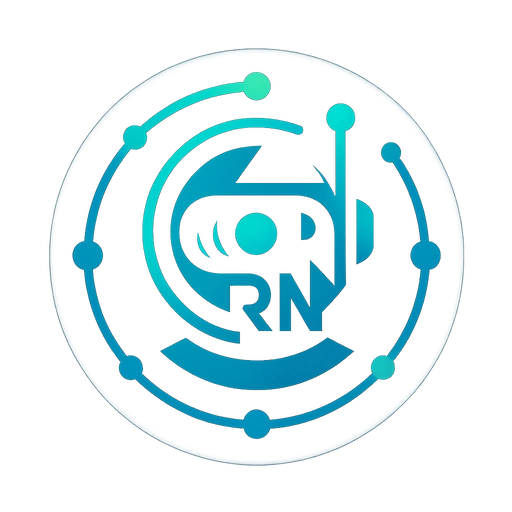
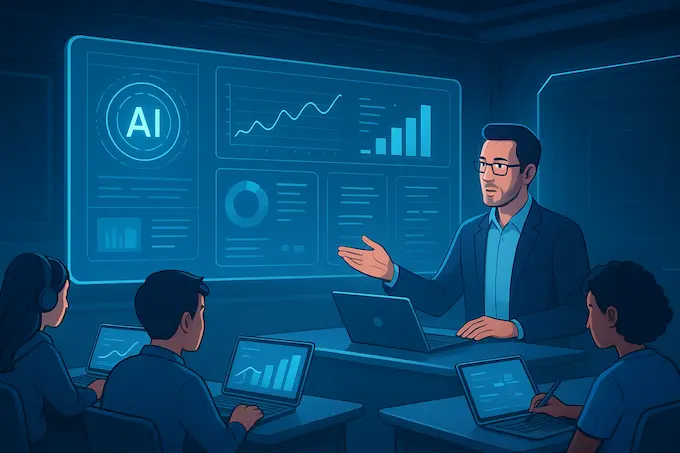

AI integration in education is a game-changer. Personalized learning and adaptive assessments can significantly enhance student outcomes.